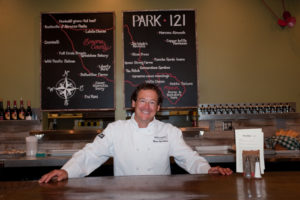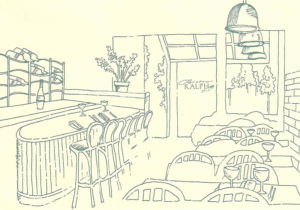CLOSED
There are only a handful of meals that I can describe as life-changing—so perfectly executed at exactly the right moment in time that they forever stand out in memory as best-in-class. Fatty tuna belly nigiri at Hana Japanese, chocolate pot de creme at Francis Ford Coppola Winery’s Rustic, chilled pea soup with Dungeness crab at Chalkboard, beef bourguignon at Chloe’s, foie gras at Cyrus.

This week, I’ve added another: Fire-roasted heirloom carrots with eggplant and buffalo mozzarella ($10) at the recently-opened Vignette. Oh.my.god. A stack of perfectly yielding, caramelized baby carrots stacked atop bits of roasted eggplant and green onion with two spoonfuls of Ramini buffalo mozzarella (not easy to find), made even more decadent with olive oil and black pepper. Just one of a frequently changing line-up of daily roasted vegetables from Chef Mark Hopper (former executive chef for the Thomas Keller Restaurant Group).
Not that the rest of the menu isn’t nearly as stunning. We can’t help but hope that the Kale Cocio e Pepe ($10) is as healthy as it sounds. A heaping pile of chopped kale, sweet Peppadew peppers, smoked mozzarella, toasted walnuts and Greek yogurt makes other salads wilt with shame.
The brief menu orbits around Hopper’s painstakingly-researched Neapolitan pizzas. Having traveled to some of the best pizzerias in the country, he honed both the dough and the wood-fired cooking method (very hot, very fast) that results in a chewy crust with crispy bubbles throughout.
What to order, however, depends on your familiarity—and perspective—on Neapolitan pizzas.
A quick public service announcement about this style of pizza. Neapolitan pizza isn’t like American pizza. They’re usually small enough for one person, minimally topped, slightly wet in the middle (you’re unlikely to be able to pick up a piece without everything sliding off) and authentically served uncut. The “char” can range from light brown to charcoal-like, with the ideal pizza ending up somewhere win the middle.
With that said, Hopper keeps things authentic with San Marzano tomato-topped Margherita (mozzarella, Grana Padino cheese, basil and olive oil, $16), to heartier “meatball parm ($19) with house made meatballs, Parmigiano Reggiano, mozzarella and garlic, the Manhattan ($18) with chopped clams and our favorite, the **Red Eye ($17)** with Calabrian chili pesto, eggs, buffalo mozzarella, charred mortadella and Grana Padano cheese. We left the Mushroom Alfredo ($18) with garlic cream, roasted mushrooms, stracciatella cheese, grilled tomatoes and herbs for next time.
Dessert is an authentically Italian affogato. Steaming espresso is poured over buffalo milk gelato.
On a warm summer night, the glass walls roll up for a cool breeze, and a small patio is perfect for afternoon lunching.
Life is short, so its worth finding those life-changing meals. Or at the very least, life-affirming. Vignette does that with aplomb.
Vignette, 6750 McKinley St., Sebastopol (at the Barlow). Open noon to 10p.m. daily.




























